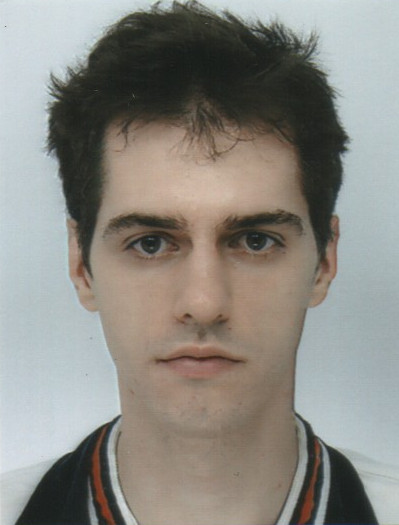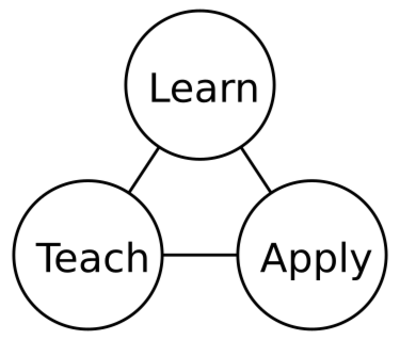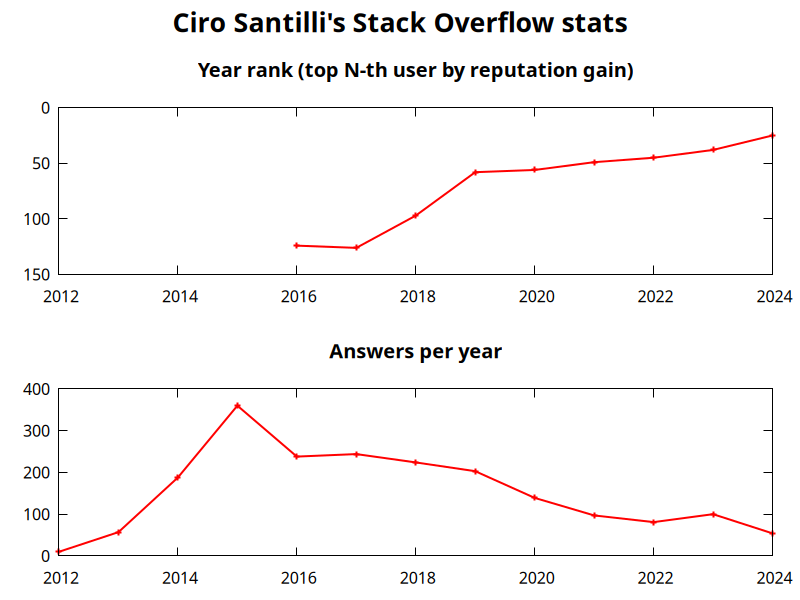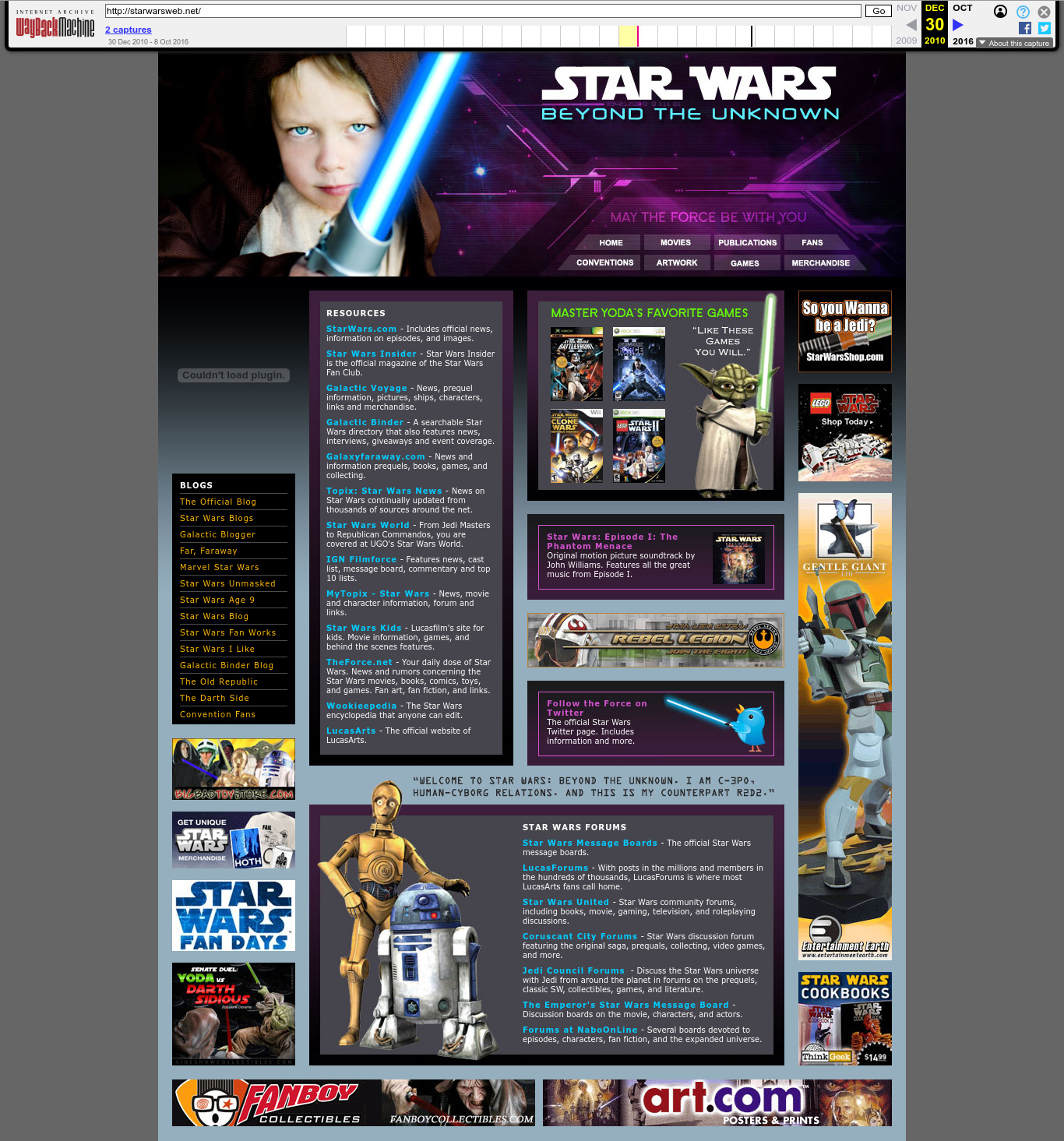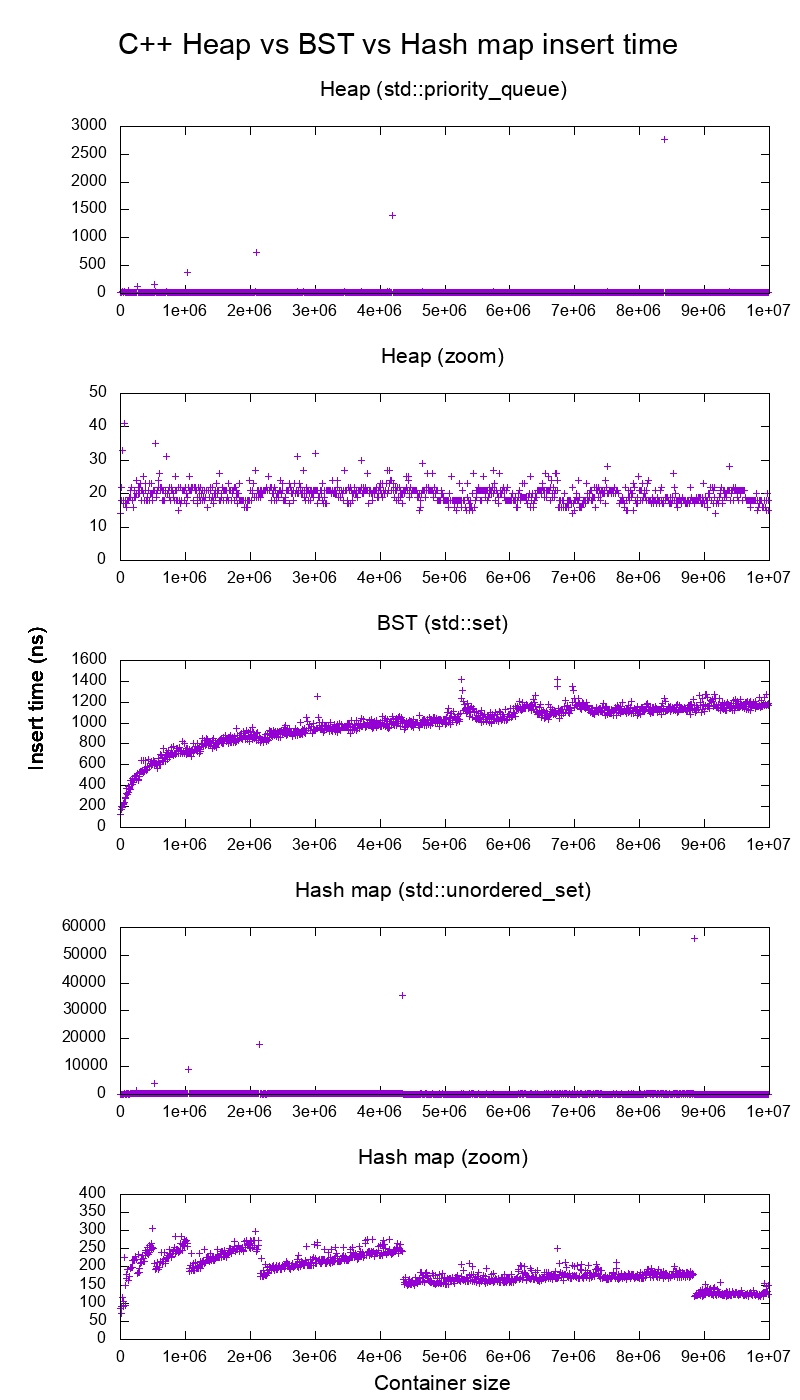Home Updated 2025-12-02
Check out: OurBigBook.com, the best way to publish your scientific knowledge. It's an open source note taking system that can publish from lightweight markup files in your computer both to a multi-user mind melding dynamic website, or as a static website. It's like Wikipedia + GitHub + Stack Overflow + Obsidian mashed up. Source code: github.com/ourbigbook/ourbigbook.
Sponsor me to work on this project. For 400k USD I will quit my job or not get a new job and work on OurBigBook full time for a second year to try and kickstart The Higher Education Revolution. Status: ~44k / 400k USD. At 4M USD I retire/tenure and work on open STEM forever. How to donate: Section "Sponsor Ciro Santilli's work on OurBigBook.com".
I first quit my job 1st June 2024 to work on the project for 1 year after I reached my initial 100k goal mostly via a 1000 Monero donation. For a second follow up year, I increased my requirement to 400k USD to give me more peace of mind as I'm destroying my career in the process. A second year greatly improve chances of success: on year one I improved my tech, on year two I want to come guns blazing to solve courses and get users.
Mission: to live in a world where you can learn university-level mathematics, physics, chemistry, biology and engineering from perfect free open source books that anyone can write to get famous. More rationale: Section "OurBigBook.com"
Explaining things is my superpower, e.g. I was top user #39 on Stack Overflow in 2023[ref][ref] and I have a few 1k+ star educational GitHub repositories[ref][ref][ref][ref]. Now I want to bring that level of awesomeness to masters level Mathematics and Physics. But I can't do it alone! So I created OurBigBook.com to allow everyone to work together towards the perfect book of everything.
My life's goal is to bring hardcore university-level STEM open educational content to all ages. Sponsor me at github.com/sponsors/cirosantilli starting from 1$/month so I can work full time on it. Further information: Section "Sponsor Ciro Santilli's work on OurBigBook.com". Achieving what I call "free gifted education" is my Nirvana.
This website is written in OurBigBook Markup, and it is published on both cirosantilli.com (static website) and outbigbook.om/cirosantilli (multi-user OurBigBook Web instance). Its source code is located at: github.com/cirosantilli/cirosantilli.github.io and also at
cirosantilli.com/_dir and it is licensed under CC BY-SA 4.0 unless otherwise noted.To contact Ciro, see: Section "How to contact Ciro Santilli". He likes to talk with random people of the Internet.
GitHub | Stack Overflow | LinkedIn | YouTube | Twitter | Wikipedia | Zhihu 知乎 | Weibo 微博 | Other accounts
Besides that, I'm also a freedom of speech slacktivist and recreational cyclist. I like Chinese traditional music and classic Brazilian pop. Opinions are my own, but they could be yours too. Tax the rich.
Let's create an educational system with:
- no distinction between university and high school, students just go as fast as they can to what they really want without stupid university entry exams
- fully open source learning material
- on-demand examinations that anyone can easily take without prerequisites
- granular entry selection only for space in specific laboratories or participation in specific novel research projects
I offer:
- online private tutoring for:
- any STEM university course
- passionate younger STEM students (any age) who want to learn university level material and beyond. Can your kid be the next Fields Medalist or Nobel Prize winner? I'm here to help, especially if you are filthy rich! I focus moving students forward as fast as they want on and on producing useful novel tutorials and results
Let your child be my Emile, and me be their Adolfo Amidei, and let's see how far they can go! I will help take your child:and achieve their ambitious STEM goals!- into the best universities
- into the best PhD programs
- educational consulting for institutions looking to improve their STEM courses
- do you know that course or teacher that consistently gets bad reviews every year? I'll work with the teacher to turn the problem around!
- are you looking to create a consistent open educational resources offering to increase your institutions internationally visibility? I can help with that too.
My approach is to:For minors, parents are welcome to join video calls, and all interactions with the student will be recorded and made available to parents.
- propose interesting research projects. The starting point is always deciding the end goal: Section "Backward design"
- learn what is needed to do the project together with the student(s)
- publish any novel results or tutorials/tools produced freely licensed online, and encourage the student to do the same (Section "Let students learn by teaching", digital garden)
I have a proven track of explaining complex concepts in an interesting and useful way. I work for the learner. Teaching statement at: Section "How to teach". Pricing to be discussed. Contact details at: Section "How to contact Ciro Santilli".
I am particularly excited about pointing people to the potential next big things, my top picks these days are:I am also generally interested in:
- quantum computing
- AGI research, in particular AI code generation, automated theorem proving and robotics
- assorted molecular biology technologies
- 20th century physics, notably AMO and condensed matter
- the history of science, and in particular trying to look at seminal papers of a field
Ciro Santilli's amazing Stack Overflow profile
. Ciro contributes almost exclusively by answering question he Googles into out of his own need, and never by refreshing the newest question of big tags for low hanging fruit! More information at: Section "Ciro Santilli's Stack Overflow contributions".Ciro Santilli's Stack Overflow stats
. Further methodology details at: Figure "Ciro Santilli's Stack Overflow stats".The problem with education by Ciro Santilli
. Source. In this video Ciro Santilli exposes his fundamental philosophy regarding why Education is broken. This philosophy was the key motivation behind the failed OurBigBook Project.OurBigBook Web topics demo
. Source. The OurBigBook topic feature allows users to "merge their minds" in a "sort by upvote"-stack overflow-like manner for each subject. This is the killer feature of OurBigBook Web. More information at: docs.ourbigbook.com/ourbigbook-web-topics.OurBigBook dynamic article tree demo
. Source. The OurBigBook dynamic tree feature allows any of your headers to be the toplevel h1 header of a page, while still displaying its descendants. SEO loves this, and it also allows users to always get their content on the correct granularity. More information at: docs.ourbigbook.com/ourbigbook-web-dynamic-article-tree.OurBigBook local editing and publishing demo
. Source. With OurBigBook you can store your content as plaintext files in a Lightweight markup, and then publish that to either OurBigBook.com to get awesome multi-user features, or as a static website where you are in full control. More information at: docs.ourbigbook.com/publish-your-content.Top Down 2D continuous game with Urho3D C++ SDL and Box2D for Reinforcement learning by Ciro Santilli (2018)
Source. More information: Section "Ciro's 2D reinforcement learning games". This is Ciro's underwhelming stab at the fundamental question: Can AGI be trained in simulations?. This project could be taken much further.Water Margin tribute to Chinese dissidents by Ciro Santilli (2022)
Source. Part of Ciro Santilli's campaign for freedom of speech in China, see also: cirosantilli.com/china-dictatorship/water-margin.Lenovo ThinkPad T430 running a BIOS hello world
. This uses Ciro Santilli's project x86 bare metal examples with source code at: github.com/cirosantilli/x86-bare-metal-examplesLinux Kernel Module Cheat presentation
. Source. This project, with source code at: github.com/cirosantilli/linux-kernel-module-cheat, aims to be the perfect emulation setup to study and develop the Linux kernel, kernel modules, QEMU, gem5 as well as x86_64, ARM userland and baremetal assembly and more.My Bitcoin inscription museum by Ciro Santilli
. Source. Introductory video to Section "Cool data embedded in the Bitcoin blockchain". -------------------------------------
| Force of Will 3 U U |
| --------------------------------- |
| | //////////// | |
| | ////() ()\////\ | |
| | ///_\ (--) \///\ | |
| | ) //// \_____///\\ | |
| | ) \ / / / / | |
| | ) / \ | | / _/ | |
| | ) \ ( ( / / / / \ | |
| | / ) ( ) / ( )/( ) \ | |
| | \(_)/(_)/ /UUUU \ \\\/ | | |
| .---------------------------------. |
| Interrupt |
| ,---------------------------------, |
| | You may pay 1 life and remove a | |
| | blue card in your hand from the | |
| | game instead of paying Force of | |
| | Will's casting cost. Effects | |
| | that prevent or redirect damage | |
| | cannot be used to counter this | |
| | loss of life. | |
| | Counter target spell. | |
| `---------------------------------` |
| l
| Illus. Terese Nelsen |
-------------------------------------Code 1.
ASCII art of a Force of Will Magic: The Gathering card inscribed in the Bitcoin blockchain
. Artist unknown, uploaded December 2014. Part of Section "Cool data embedded in the Bitcoin blockchain" where Ciro Santilli maintains a curated list of such interesting inscriptions.
This was a small project done by Ciro for artistic purposes that received some attention due to the incredible hype surrounding cryptocurrencies at the time. Ciro Santilli's views on cryptocurrencies are summarized at: Section "Are cryptocurrencies useful?".
YellowRobot.jpgJPG image fully embedded in the Bitcoin blockchain depicting some kind of cut material art depicting a yellow robot, inscribed on January 29, 2017.
Ciro Santilli found this image and others during his research for Section "Cool data embedded in the Bitcoin blockchain" by searching for image fingerprints on every transaction payload of the blockchain with a script.
The image was uploaded by EMBII, co-creator of the AtomSea & EMBII upload mechanism, which was responsible for a large part of the image inscriptions in the Bitcoin blockchain.
The associated message reads:This is one of Ciro Santilli's favorite AtomSea & EMBII uploads, as it perfectly encapsules the "medium as an art form" approach to blockchain art, where even non-novel works can be recontextualized into something interesting, here depicting an opposition between the ephemeral and the immutable.
Chiharu [EMBII's Japanese wife] and I found this little yellow robot while exploring Chicago. It will be covered by tar or eventually removed but this tribute will remain. N 41.880778 E -87.629210
2010 Wayback Machine archive of starwarsweb.net
. This website was used as one of the CIA 2010 covert communication websites, a covert system the CIA used to communicate with its assets. More details at: Section "CIA 2010 covert communication websites".
Ciro Santilli had some naughty OSINT fun finding some of the websites of this defunct network in 2023 after he heard about the 2022 Reuters report on the matter, which for the first time gave away 7 concrete websites out of a claimed 885 total found. As of November 2023, Ciro had found about 350 of them.
2010 Wayback Machine archive of noticiasmusica.net
. This is another website that was used as one of the CIA 2010 covert communication websites. This website is written in Brazilian Portuguese, and therefore suggests that the CIA had assets in Brazil at the time, and thus was spying on a "fellow democracy".
Although Snowden's revelations made it extremely obvious to the world that the USA spies upon everyone outside of the Five Eyes, including fellow democracies, it is rare to have such a direct a concrete proof of it visible live right on the Wayback Machine. Other targeted democracies include France, Germany, Italy and Spain. More details at: USA spying on its own allies.
This investigative report by Ciro Santilli was featured on the Daily Mail after 404 Media reported on it in 2025.
Diagram of the fundamental theorem on homomorphisms by Ciro Santilli (2020)
Shows the relationship between group homomorphisms and normal subgroups.
Used in the Stack Exchange answer to What is the intuition behind normal subgroups? One of Section "The best articles by Ciro Santilli".
Spacetime diagram illustrating how faster-than-light travel implies time travel by Ciro Santilli (2021)
Used in the Stack Exchange answer to Does faster than light travel imply travelling back in time?. One of Section "The best articles by Ciro Santilli".Average insertion time into heaps, binary search tree and hash maps of the C++ standard library by Ciro Santilli (2015)
Source. Used in the Stack Overflow answer to Heap vs Binary Search Tree (BST). One of Section "The best articles by Ciro Santilli".Birch and Swinnerton-Dyer conjecture in two minutes by Ciro Santilli
. Source. Quick and direct explanation of the statement of the BSD conjecture for people who know basic university mathematics. This is one of the Millennium Prize Problems, and you will get a million dollars if you can solve it! This therefore falls in the Simple to state but hard to prove of Ciro Santilli's the beauty of mathematics aesthetics.Top view of an open Oxford Nanopore MinION
. Source. This is Ciro Santilli's hand on the Wikipedia article: en.wikipedia.org/wiki/Oxford_Nanopore_Technologies. He put it there after working a bit on Section "How to use an Oxford Nanopore MinION to extract DNA from river water and determine which bacteria live in it" :-) And he would love to document more experiments like that one Section "Videos of all key physics experiments", but opportunities are extremely rare.A quick 2D continuous AI game prototype for reinforcement learning written in Matter.js, you can view it on a separate page at cirosantilli.com/_raw/js/matterjs/examples.html#top-down-asdw-fixed-viewport. This is a for-fun-only prototype for Ciro's 2D reinforcement learning games, C++ or maybe Python (for the deep learning ecosystem) seems inevitable for a serious version of such a project. But it is cute how much you can do with a few lines of Matter.js!
HTML snippet:
<iframe src="_raw/js/matterjs/examples.html#top-down-asdw-fixed-viewport" width="1000" height="850"></iframe> Integrated circuit Updated 2025-08-08
It is quite amazing to read through books such as The Supermen: The Story of Seymour Cray by Charles J. Murray (1997), as it makes you notice that earlier CPUs (all before the 70's) were not made with integrated circuits, but rather smaller pieces glued up on PCBs! E.g. the arithmetic logic unit was actually a discrete component at one point.
The reason for this can also be understood quite clearly by reading books such as Robert Noyce: The Man Behind the Microchip by Leslie Berlin (2006). The first integrated circuits were just too small for this. It was initially unimaginable that a CPU would fit in a single chip! Even just having a very small number of components on a chip was already revolutionary and enough to kick-start the industry. Just imagine how much money any level of integration saved in those early days for production, e.g. as opposed to manually soldering point-to-point constructions. Also the reliability, size an weight gains were amazing. In particular for military and spacial applications originally.
A briefing on semiconductors by Fairchild Semiconductor (1967)
Source. Uploaded by the Computer History Museum. There is value in tutorials written by early pioneers of the field, this is pure gold.
Shows:
- photomasks
- silicon ingots and wafer processing
I should have loved biology by James Somers Updated 2025-07-16
This resonates a lot with Ciro Santilli's ideas!
- physics and the illusion of life
- physics education needs more focus on understanding experiments and their history:
- Education is broken
- molecular biology feels like systems programming
I've never come across a subject so fractal in its complexity. It reminds me of computing that way.
Physics education needs more focus on understanding experiments and their history Updated 2025-07-16
This is the only way to truly understand and appreciate the subject.
Understanding the experiments gets intimately entangled with basically learning the history of physics, which is extremely beneficial as also highlighted by Ron Maimon, related: there is value in tutorials written by early pioneers of the field.
In the Surely You're Joking, Mr. Feynman chapter O Americano, Outra Vez! Richard Feynman describes his experience teaching in Brazil in the early 1950s, and how everything was memorized, without any explanation of the experiments or that the theory has some relationship to the real world!
Although things have improved considerably since in Brazil, Ciro still feels that some areas of physics are still taught without enough experiments described upfront. Notably, ironically, quantum field theory, which is where Feynman himself worked.
Feynman gave huge importance to understanding and explaining experiments, as can also be seen on Richard Feynman Quantum Electrodynamics Lecture at University of Auckland (1979).
'Making' - the best way of learning science and technology by Manish Jain (2018)
Source. Ron Maimon Updated 2025-07-26
Ron Maimon is a male human theoretical physicist with an all but dissertation started in 1995 at Cornell University[ref][ref].
Ron Maimon's Physics Stack Exchange profile picture
. Source. Ron is mostly known for simultaneously:
- the amazing free online content he has published in online forums such as Stack Overflow and Quora, notably about particle physics, until around 2014 when Ron disappeared from the Internet entirely. Ciro Santilli figures he's hanging out with Ettore Majorana somewhere in the metaverse.
- having either been blocked from or quit every single website he participates in, partly due to his highly combative nature, e.g.:He explicitly defends this combative approach at youtu.be/ObXbKbpkSjQ?t=944 from Video 1. "Ron Maimon interview with Jeff Meverson (2014)":
- Physics Stack Exchange: physics.meta.stackexchange.com/users/4864/ron-maimon
physics.meta.stackexchange.com/questions/976/physics-ses-inability-to-deal-with-users-who-are-highly-persistent-have-kook-b user Marty Green makes one of the best characterizations of Ron's approach to science/collaboration:The thing about Ron Maimon is he definitely comes here to talk about physics. I personally can't get into discussions with him for two reasons: first, he's so single-minded in his own point of view that you can't really communicate with him back and forth; secondly, the structure of this forum is simply not conducive to extended discussions. But he sometimes posts things that are so coherently argued and with such intricate detail that even if I can't understand them myself, I just can't believe he's simply pulling this stuff out of his ass.
- physics.meta.stackexchange.com/questions/1376/what-violation-caused-this-suspension user Jerry Schirmer makes another good comment:
- Quora: www.quora.com/profile/Ron-Maimon. Ron was very active on Quora, until he was blocked for his views on the Boston Marathon bombing as mentioned at Video 1. "Ron Maimon interview with Jeff Meverson (2014)"
And notably, relevant to cirosantilli.com/china-dictatorship/stack-overflow-mods-refuse-to-clarify-if-anti-ccp-imagery-is-allowed-or-not-2021In order to have this process work [finding of truth] it is extremely important that the tone is hostile, that it is like a court of law, where you have an adversarial relationship with your opponent. Because if you have a friendly relationship with your opponent, then political consensus is preserved.
and he then also mentions that Wolfgang Pauli was a major proponent of this in physics, and so was Galileo.Unfortunately, when you're in a minority, the only way to correct the consensus view is to just shout it, and repeat it, until people go and look and check for themselves. The reason is that it creates an adversarial atmosphere where the people have to pick sides, and they don't like to pick sides, they would rather have everyone be happy. So when you have to pick sides, what do you do? You either butt out, you just leave it alone, you run away. Or you sit and review the evidence until you know which side to pick.
- Physics Stack Exchange: physics.meta.stackexchange.com/users/4864/ron-maimon
Ron seems to share a few philosophies which Ciro greatly agrees with as part of Cirism, which together with his knowledge of physics, make Ciro greatly respect Ron. Such philosophies include:
- he gives great importance to the history of physics and learning from original papers. He appears to know this insanely well, notably emphasizing that there is value in tutorials written by early pioneers of the field, see also Section "How to teach and learn physics". TODO find quote. Ciro Santilli distinctly remembers one specifically taking about this, but can't find it anymore.
- education views, notably emphasising autodidacticism
- www.quora.com/Why-should-high-school-students-learn-physics/answer/Ron-Maimon, highlighted at gmachine1729.livejournal.com/161418.html: "Why should high school students learn physics?" Answer:Yes, please, give it to me baby:
But they should learn it, preferably on their own, because the school doesn't know how to teach physics. Physics is extremely interesting, even the elementary kind. It takes the mathematics you learn in high school and uses it to describe certain natural phenomenon completely, beyond what was imagined possible in the wildest dreams of people like Pythagoras or Archimedes. If you have a computer, Newton's laws plus a tiny code can produce the motion of the planets around the sun, the motion of a free-twirling baton, the motion of colliding billiards, it's very simple.
- www.quora.com/Why-should-high-school-students-learn-physics/answer/Ron-Maimon, highlighted at gmachine1729.livejournal.com/161418.html: "Why should high school students learn physics?" Answer:
- enthusiasm for molecular biology technologies, seen e.g. at: www.quora.com/Why-are-an-abundance-of-physicists-moving-to-theoretical-biology/answer/Ron-Maimon on Quora:Ciro is actually specifically curious about whole cell simulation which he makes reference to.
[biology] is also clearly going to be the major technology of the 21st century, you should have a sugar outlet next to the electrical outlet, and plug in artificial biological technology made out of artificial cells. To plan these requires a complete method of describing biological cells, a precise model of all the processes, so that you can make artificial ones, and it produces a type of precise control on single-molecule chemistry that makes chemists drool.
- effortless effort and the to explain everything he knows online. These can be seen at www.quora.com/How-do-you-control-your-urge-to-access-the-internet-so-you-can-complete-your-assignments "How do you control your urge to access the Internet so you can complete your assignments?":
- his cheapness as in Ciro Santilli's cheapness as mentioned at youtu.be/ObXbKbpkSjQ?t=2454 from Video 1. "Ron Maimon interview with Jeff Meverson (2014)":Interviewer: there's a question on Quora where you say that you took a vow of poverty when you were very young.Ron: I was ten, I mean, most people would give it up, but I mean I figured I didn't have any need to give it up, so I just kept with it, I mean, I was never was really offered that much more. When we started the startup, I think I was offered 50k, but I said "no, I'll keep it 40k, I took a vow", and then they gave me 40k. And that of sort of set an example, the CEO also took 40k. It was a very good thing because we had very little money, we were a startup, and we were going by seed money.
However he also subscribes to some theories which Ciro Santilli considers conspiracy theories, e.g. his ideas about the Boston Marathon bombing that got him banned from Quora (a ban which Ciro strongly opposes due to freedom of speech concerns!), but the physics might be sound, Ciro Santilli does not know enough physics to judge, but it often feels that what he says makes sense.
chat.stackexchange.com/transcript/message/7104585#7104585 mentions that he was at Cornell University and did all but dissertation, but he mentions that he was still self-taught:This is corroborated e.g. at: web.archive.org/web/20201226171231/http://pages.physics.cornell.edu/~gtoombes/Student_Index.html (original pages.physics.cornell.edu/~gtoombes/Student_Index.html down as of 2023).
Eugene Seidel: On your personal info page you write that you are not a physics Ph.D. but does that mean you were a physics undergrad in college then went to grad school and finished ABD... or are you entirely self taught?Ron Maimon: ABD. I am self- taught though, I only went to school for accreditation. I had a thesis worth of work at the time I left grad-school,Eugene Seidel: ok thanksRon Maimon: I was just kind of sickened by academic stuff that was going on--- large extra dimensions were popular then.
At youtu.be/ObXbKbpkSjQ?t=2454 from Video 1. "Ron Maimon interview with Jeff Meverson (2014)" he mentions his brother is a professor. At physics.stackexchange.com/questions/32382/could-we-build-a-supercomputer-out-of-wires-and-switches-instead-of-a-microchip confirms that his brother's name is "Gaby Maimon", so this neuroscience professor at the Rockerfeller University is likely him: www.rockefeller.edu/our-scientists/heads-of-laboratories/985-gaby-maimon/. Looks, age, location and research interest match.
Some notable technical posts:
Some notable history posts:
- physics.stackexchange.com/questions/18632/good-book-on-the-history-of-quantum-mechanics/18643#18643 about the history of quantum mechanics give the quadratic explanation
- and closely related for the factor 2: physics.stackexchange.com/questions/27847/why-is-there-a-frac-1-2-in-frac-1-2-mv2/27916#27916
Bibliography:
- www.reddit.com/r/DecodingTheGurus/comments/17cb0n8/do_you_remember_ron_maimon_from_the_prepodcast/ "Do you remember Ron Maimon from the pre-podcast era? Where would he rank on the Guru scale?" user JohnFatherJohn comments:
I was actually friends with Ron Maimon at Cornell around 2006-2008. He was doing some research for my undergraduate research advisor and was a regular at a few of the same coffee shops I frequented. He was a legitimate brilliant physicist who had some strange personality quirks and blindspots, but his simultaneous breadth and depth of physics knowledge was staggering. He detested academia and couldn't stay focused on any one given problem for too long before moving on to something else though.
- gmachine1729.livejournal.com/161418.html Ron Maimon answers about physics and math on Quora (part 1) by Sheng Li (2020) contains a selection of some amazing Ron Maimon posts
- www.reddit.com/r/RonMaimon/ someone made a Reddit for him. Less than 100 users as of 2022, but has potential.
- some Quora threads about him, oh the irony:
- www.quora.com/Is-Ron-Maimon-actually-a-pioneer-or-a-jest
- www.quora.com/Are-Ron-Maimons-answers-on-mathematics-physics-and-computer-science-factually-correct
- www.quora.com/What-do-people-think-of-Ron-Maimons-paper-Computational-Theory-of-Biological-Function-I
- www.quora.com/Who-is-Ron-Maimon/answer/Ron-MaimonAlso in a comment he explains something to a now deleted comment, presumably asking why he dropped out of grad school, and gives a lot more insight:
I'm a physics grad school drop-out working in theoretical biology but I still do physics when I get a chance, but not right now because I am in a middle of a project to understand the properties of a certain virus as completely as possible.
I dropped out mainly to do biology with friends at a startup, because I figured out how you're supposed to do theory in biology, but also I truly believe it was next to impossible for me to get a degree without selling out, and I would rather be shot than write a paper with an idea I don't believe.My grad school phase was a disaster. I first worked for Eric Siggia, but I got away because he had me do something boring and safe, I figured I have only a limited number of years before I turn 30 and my brain rots, and I wasn't going to sell out and do second-rate stuff. I found a young guy at the department doing interesting things (Siggia was also doing interesting things, like RNA interactions, he just wouldn't assign any of them to ME), this was Philip Argyres, and got him to take me. Argyres wanted me to work on large-extra dimensions (this was 1998), but I made it clear to him that I would rather be boiled in oil. I worked a little bit on a crappy experimental setup that didn't work at all, because I didn't know enough about electromagnetic screening nor about how to set up experiment. But EVERYONE LOVED IT! This is also how I knew it was shit. Good work is when everyone hates it. But I learned Lifschitz's ideas for quantum electrodynamics in media from this project.Me and every competent young person in high-energy physics knew large extra dimensions was a fraud on the day it came out, and I had no intention of doing anything except killing the theory. Once Wikipedia appeared, I did my best to kill it by exposing it's charlatanry on the page for large extra dimension. That was in 2005 (after getting fired from the company), and from this point onward large-extra-dimensions lost steam. But I can't tell how much of this was my doing.Argyres liked N=2 theory, and we did something minor in N=2 SUSY models around 2000, but I was bogged down here, because I was trying to do Nicolai map for these, and it ALMOST worked for years, but it never quite worked. But I knew from the moduli interpretation and Seiberg-Witten solution that it must work. If I live long enough, I'll figure it out, I am still sure it isn't hard. But this was the link to statistical stochastic models, the work I was doing with Jennifer Schwarz, and I wanted to link up the two bodies of work (they naturally do through Nicolai map).But I had my own discovery, the first real discovery I made, in 1999, this thing that I called the mass-charge inequality, what Vafa and Motl called "the weakest-force principle" when they discovered it in 2006. It was swampland, and Vafa hadn't yet begun swampland. My advisor didn't believe my result was correct, because he saw me say many stupid things before this. So he wouldn't write it or develop it with me (but I had read about Veltman telling 'tHooft he couldn't publish the beta-function, I knew Argyres was wrong about this)Anyway, Argyres left for Cincinnatti in 2000, and I joined the company then. I was in the company until january 2005. Then they fired me, which was ok, by then it was a miserable hell-hole full of business types.I discovered Wikipedia, and started killing large extra dimensions. I wanted to finish my thesis, and some people agreed to help me do this, but I had told myself "no thesis until you get the Nicolai map sorted out" and I never did. I worked with Chris Henley a little bit, who wanted me to do some stuff for him, and I discovered an interesting model for high-Tc, but Henley said it was out of fasion, and nobody would care, even though I knew it was the key to the phenomenon (still unpublished, but soon).This was 2008-2009, and I became obsessed with cold fusion, so Henley dropped me, as I had clearly gone crazy. I developed the theory of cold fusion during the last weeks of working for Henley. Then I dropped out for good.Honestly, by the time I was gone, I realized that the internet would make a degree counterproductive, because I knew I had better internet writing skills than any of the old people, I was a Usenet person. Online, the degrees and accreditation were actually a hinderance. So by this point, I secretly preferred not to have a PhD, because I knew I was good at physics, and I could attack from the outside and win. It's not too hard if you know the technical material.The only problem is that I was unemployed and isolated in Ithaca for about 7 years after having gone through my first productive phase. But I developed the cold-fusion ideas in this period, I learned a lot of mathematics, and I developed a ton of biology ideas that are mostly unpublished, but will be published soon. It astonished people that I could have no degree and be unemployed and have such a sky-high ego. The reason is that I could evaluate my own stuff, and I liked it!
Other possible accounts:
Backlinks:
- 2022: twitter.com/johncarlosbaez/status/1556085484937310209 by John Baez. This page was one of the top Google hits for "Ron Maimon" at the time.
Ron Maimon interview with Jeff Meverson (2014)
Source. Ripped from Jeff's "Quoracast": player.fm/series/quoracast-podcast/ron-maimon-truther Ron mentions he was an early-Usenet user. Key points:- youtu.be/ObXbKbpkSjQ?t=2247 mentions that there is a question on Quora where Ron said he took a vow of poverty when he was 10. This reminded Ciro of Ciro Santilli's cheapness.
- youtu.be/ObXbKbpkSjQ?t=2532 mentions his admiration for Leonard Susskind, in particular him starting out as a plumber
- youtu.be/ObXbKbpkSjQ?t=3088Ron: no, no, I'll just go and do, library, write some papers or whatever. This is not, and this is not like... basically, look, I wrote most of what I wanted to write on Quora anyway. I have gotten almost everything out of my system. I wanted to write, a couple of other things, but they weren't major.
University of São Paulo Updated 2025-07-16
In retrospect, doing electrical engineering (and likey the other engineering degrees) felt like taking a trip to the 60s in the United States, due to both the subject matter, and how old the concrete buildings were!
This does not need to be a bad thing. It is in that era (and earlier) that much of the exciting foundations of the field were set, and there is great value in there is value in tutorials written by early pioneers of the field. Not that they were amazing at excting history lessons as they should be. But the course outline suggested that intent.
But that point of view must also be accompanied by the excitement of the great ongoing advances of technology (and impact they had in the past). And on that, they failed.
